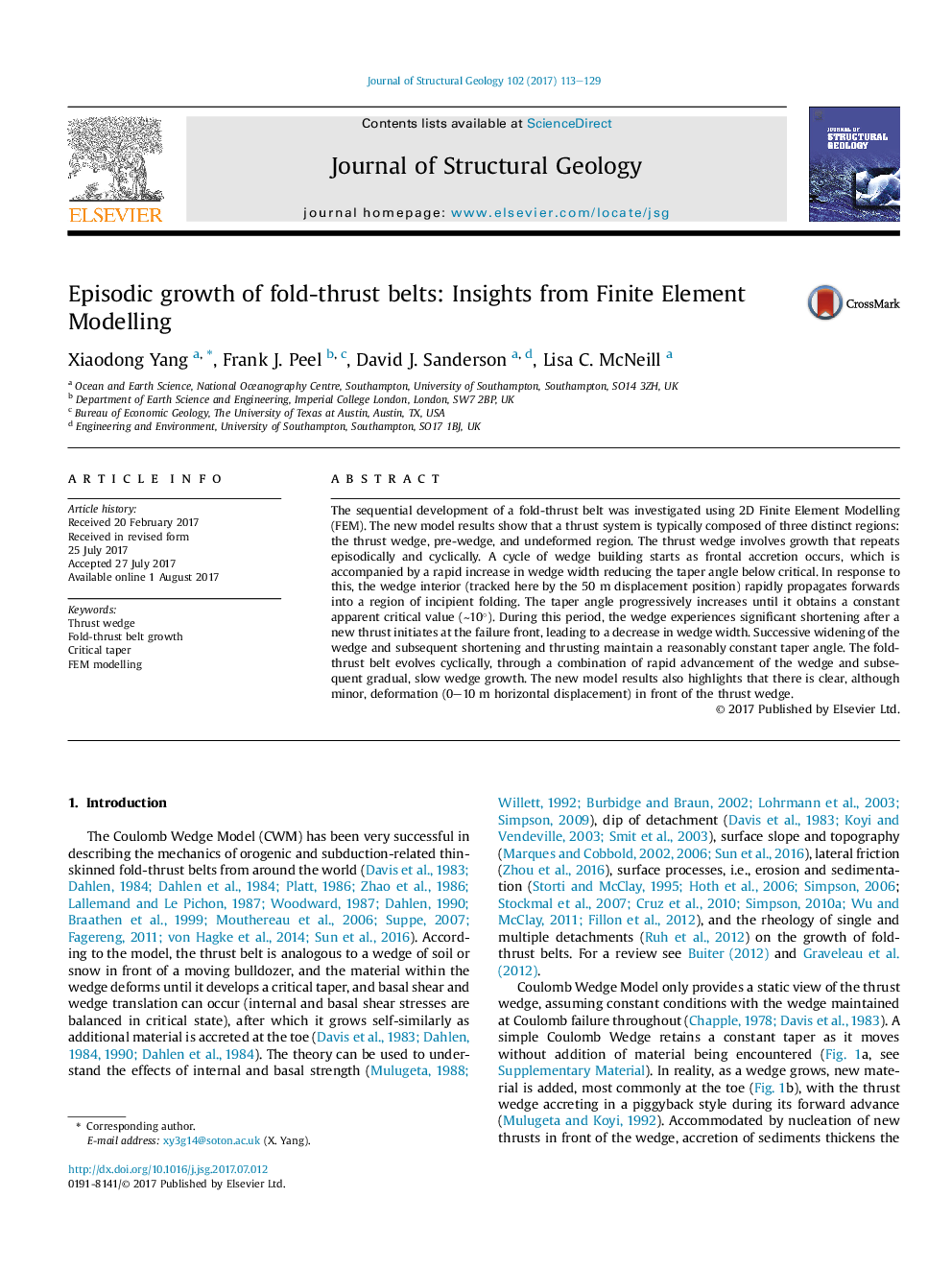| Article ID | Journal | Published Year | Pages | File Type |
|---|---|---|---|---|
| 5786249 | Journal of Structural Geology | 2017 | 17 Pages |
Abstract
The sequential development of a fold-thrust belt was investigated using 2D Finite Element Modelling (FEM). The new model results show that a thrust system is typically composed of three distinct regions: the thrust wedge, pre-wedge, and undeformed region. The thrust wedge involves growth that repeats episodically and cyclically. A cycle of wedge building starts as frontal accretion occurs, which is accompanied by a rapid increase in wedge width reducing the taper angle below critical. In response to this, the wedge interior (tracked here by the 50 m displacement position) rapidly propagates forwards into a region of incipient folding. The taper angle progressively increases until it obtains a constant apparent critical value (â¼10°). During this period, the wedge experiences significant shortening after a new thrust initiates at the failure front, leading to a decrease in wedge width. Successive widening of the wedge and subsequent shortening and thrusting maintain a reasonably constant taper angle. The fold-thrust belt evolves cyclically, through a combination of rapid advancement of the wedge and subsequent gradual, slow wedge growth. The new model results also highlights that there is clear, although minor, deformation (0-10 m horizontal displacement) in front of the thrust wedge.
Related Topics
Physical Sciences and Engineering
Earth and Planetary Sciences
Geology
Authors
Xiaodong Yang, Frank J. Peel, David J. Sanderson, Lisa C. McNeill,
